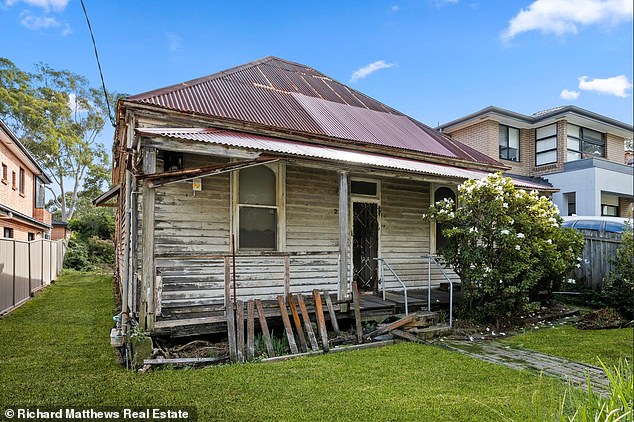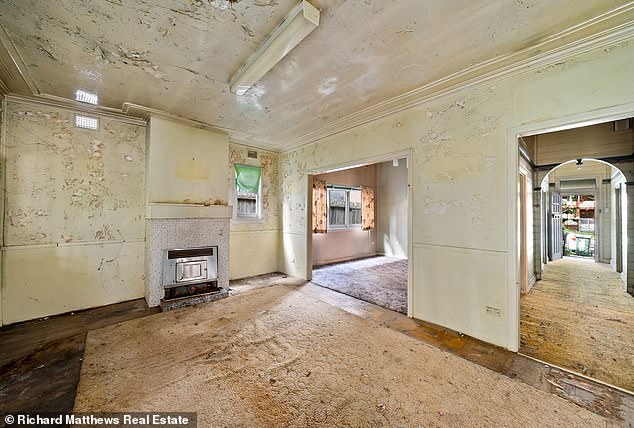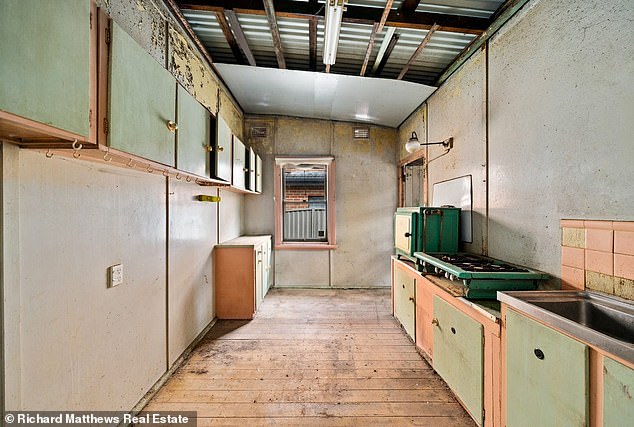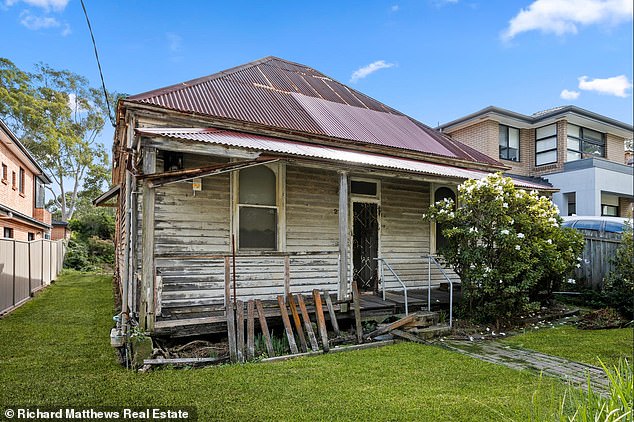An uninhabitable, rotting three-bedroom shack in central Sydney has sold for $2.41 million as house prices across the country continue to rise.
The Enfield home, which needs more than $500,000 in renovations to make it habitable, sold on Saturday in front of 300 people. There were 25 registered bidders.
Agent Matthew Blackmore of Richards Matthews Real Estate said he didn’t expect the property to fetch more than $2 million because it needed a lot of work to make it habitable.
“It’s probably the most bizarre auction I’ve ever seen in real estate,” he said.
He said there were “endless possibilities” for the next owner of the 6,000-square-foot plot of land.
“There are holes in the ceiling, the floor is very old wood and you have to be careful where you walk,” he said before the auction.
But Mr Blackmore said the significant damage had not deterred any bidders.
“Some of the people who called about it told me they had seen the house several times and always thought they would buy it if it came on the market,” he said.

A rotting timber house in Enfield, in Sydney’s central west, isn’t exactly the first thing that comes to mind when you picture a $2.5 million property in the city


Selling agent Matthew Blackmore said there are holes in the ceiling, the floor is very old wood and you have to be careful where you walk
Mr Blackmore said the house was on The Parade, the best street in Enfield, and because the area was mainly made up of existing houses, there were not many opportunities for buyers to purchase a house with a good land value.
Mr. Blackmore also sold a house across the street that was $200,000 over reserve. However, it was a move-in, double-brick home and the buyers were able to move in immediately.
“That a house that you can’t move into right away is selling for a few hundred thousand dollars less is madness,” he said.
Some people at the auction hoped to buy the house for the bargain price of $1.5 million, but Mr. Blackmore said about half of the bidders offered more than $2 million.
It is said that most interested parties wanted to tear the building down and rebuild a house in its place. Given its location, the building would likely be worth around $3.9 million.
With no supply in the current market, Mr Blackmore did not expect house prices to fall anytime soon.
“If there were ten more houses like this, they would be sold tomorrow,” he said.
‘Good land in good suburbs does very well.’
According to CoreLogic’s July report, the average cost of a house in Australia rose by $59,000 in 12 months to $794,000.


It is known that most interested parties wanted to tear it down and build a house in its place, which would likely be worth $3.9 million.
The continued growth since February means average house prices rose by eight percent in the 2023-24 budget year.
Home sales also showed a strong recovery, up 8.6 per cent on year-end figures. Perth saw a historic 29 per cent increase in sales compared to the five-year average.
CoreLogic research director Tim Lawless said the national index has “found a rhythm” and has risen between 0.5 and 0.8 percent month-on-month since February.
“The continued growth is taking place despite a range of downside risks, including high interest rates, cost of living pressures, affordability issues and tight credit policies,” he said.
However, people trying to buy their first home still face a chronic housing shortage in most of the country, with the supply of homes in decline in most states.



